Learn about the latest tips, tutorials, upcoming events and certifications

SAS' Leonid Batkhan encourages you to join him at SASensei, an independent, third-party online SAS learning resource (game).
Learn about the latest tips, tutorials, upcoming events and certifications

SAS' Leonid Batkhan encourages you to join him at SASensei, an independent, third-party online SAS learning resource (game).

1. はじめに 前回投稿しました「SAS/ACCESSのご紹介とSnowflakeとの連携デモ」はご覧になったでしょうか。SASと外部のデータストレージサービスを連携する「SAS/ACCESS」のご紹介と、実際に「Snowflake」というサービスに連携してみました。今回は、その続きとして、10年以上前からビッグデータ・アナリティクスの基本アーキテクチャである、In-Database機能の代表的な機能である、SQLパススルーという機能をご説明し、デモを準備しました。 2. SQLパススルーについて SAS/ACCESS がインストールされている場合、SQLパススルーを使用してデータストレージサービスにクエリできます。接続方法に応じてSQLパススルーは、「暗黙的パススルー」と「明示的パススルー」に分けることができます。 暗黙的パススルーの価値は、作成したSASコードが自動的にデータストレージサービスが処理できるSQLに変換され、そのSQLをデータストレージサービス側に与えることにあります。ですので、SASで実行されたSQLやSASプロシジャに指定されたWHERE句など、可能な限りデータストレージサービス側で処理を行い、結果だけをSAS側に転送することが可能です。一方、明示的パススルーの場合には、DB依存のSQLを明示的に記述することできます。暗黙的パススルーと明示的パススルーについてまとめた表を下に記載していますので、ご覧ください。今回は、暗黙的パススルーについて詳しくご紹介したいと思います。 ▲SAS CommunityでSQL Pass throughについて質問するユーザー 暗黙的パススルーを使用する方が良いか、明示的パススルーを使用するのが良いのか気になるかと思います。実はこのトピックは、SAS Communityでもよく見られ、SAS/ ACCESSを使用している全世界のユーザーにとっても気になる質問です。どちらを使用するかは、どこに基準を置くか、また、SASとデータストレージサービスの環境のスペックによって異なると思います。ですので、皆さんもこのような疑問が生じた場合は、SASに相談してみてはいかがでしょうか。 3. 暗黙的パススルーのデモ 3-1. データの紹介とデモの概要 今回のデモのために、「pets」と「owners」という名前で2つのテーブルをデータストレージサービス(今回は、Snowflake)側に事前に保存しておきました。 「pets」テーブルには、3つのカラムがあります。 Id: ペット固有のid Name: ペットの名前 Type: ペットの種類(犬、猫、その他) Id Name Type 1 オオビ 犬 2 ローザ 猫 3 ワンチャン その他 … … … もう1つのテーブル「owners」にも3つのカラムがあります。 Id: オーナー固有のid Name: オーナーの名前
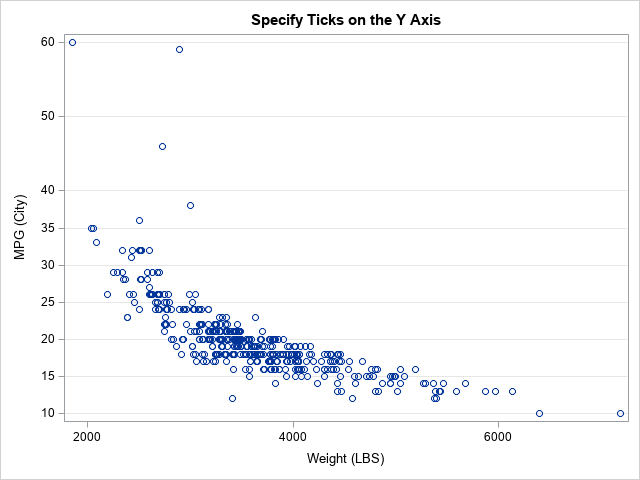
Have you ever heard of the DOLIST syntax? You might know the syntax even if you are not familiar with the name. The DOLIST syntax is a way to specify a list of numerical values to an option in a SAS procedure. Applications include: Specify the end points for bins
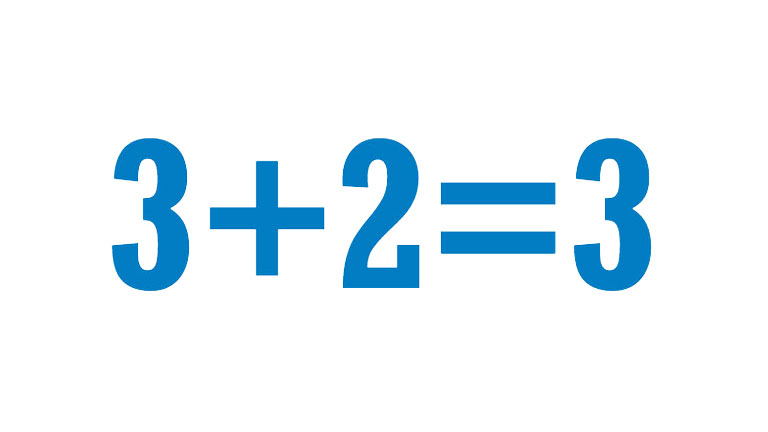
SAS' Leonid Batkhan demonstrates a popular "divide-and-conquer" efficiency strategy using SAS/Connect®.

As I discussed in a previous article, the simple block bootstrap is a way to perform a bootstrap analysis on a time series. The first step is to decompose the series into additive components: Y = Predicted + Residuals. You then choose a block length (L) that divides the total
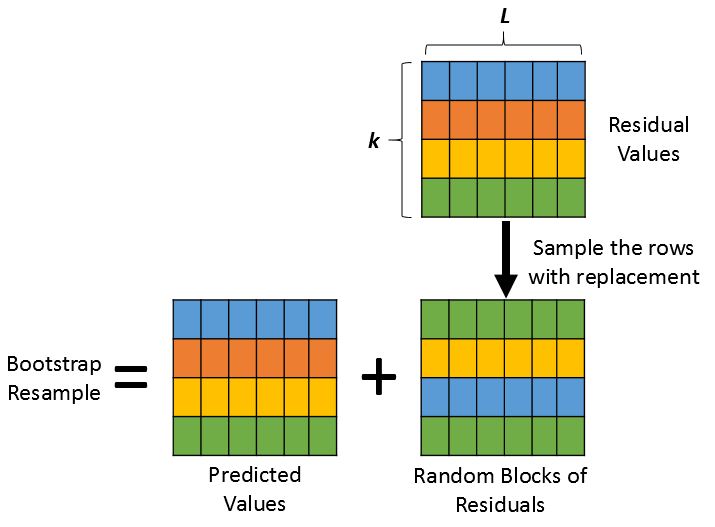
For ordinary least squares (OLS) regression, you can use a basic bootstrap of the residuals (called residual resampling) to perform a bootstrap analysis of the parameter estimates. This is possible because an assumption of OLS regression is that the residuals are independent. Therefore, you can reshuffle the residuals to get

Find out the most popular SAS Users YouTube channel how to tutorials, and learn a thing or two!
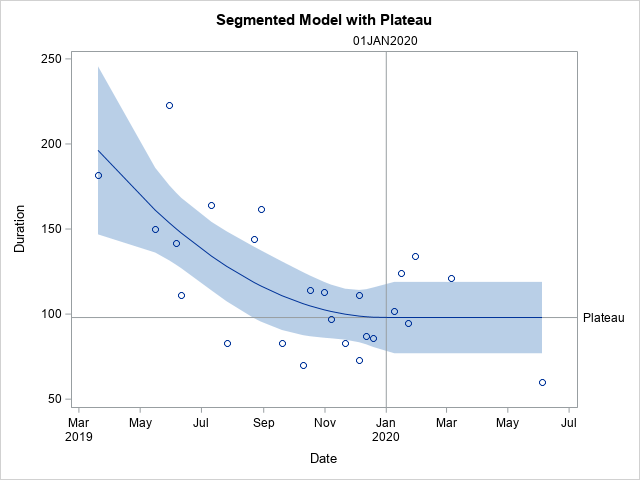
A segmented regression model is a piecewise regression model that has two or more sub-models, each defined on a separate domain for the explanatory variables. For simplicity, assume the model has one continuous explanatory variable, X. The simplest segmented regression model assumes that the response is modeled by one parametric
지난 텍스트 분석 시리즈 2편에서는 보험사의 데이터를 이용하여 예측 모델을 개발하고, 모델의 성능을 개선하여 고객 행동에 대한 예측도를 높이는 방법을 살펴봤습니다. 이번에는 영화 리뷰 데이터를 사용하여 분류 규칙을 개발하는 과정을 SAS Visual Text Analytics를 중심으로 알아보겠습니다. SAS Visual Text Analytics(이하, VTA)는 대용량의 비정형 데이터로부터 쉽게 인사이트를 추출할 수 있도록 설계된

01. はじめに 最近多くの人々がクラウド環境をベースにしたデータストレージサービスを利用しています。 ここで皆さん、突然ですが、データを管理するためにローカル(またはオンプレミス)環境を構築していた過去を振り返ってみてください。 以前は、データを保存するために、関連ソフトウェアやハードウェアを購入・設置・インストールし、様々な環境設定を行います。3か月後、データの量が増えてきてデータベースの容量が足りなくなります。そしてまた多くの費用と時間を使って、必要なソフトウェア・ハードウェアを再び購入、同じく様々な環境設定をします。 上記に記載したような様子は現在のビジネス世界ではほとんど見当たりません。今日必要なのは、ただメールアドレスとクレジットカードのみです。最近では様々なデータストレージサービスが生まれてきたからです。このようなサービスはクラウド環境で動いていて、一定期間料金を支払えば利用できる「subscription」(サブスクリプション)ベースであり、前払い方式ではなく、使用した分だけ課金される「pay as you go」(ペイアズユーゴー)方式が特徴です。SASでも様々なデータストレージサービスに対応していますが、今日はその情報について詳しくお伝えします。 02. SAS/ACCESSのご紹介 「SAS/ ACCESS」とは、SASと他のベンダーのデータストレージサービスを連携するインターフェースです。下記のような特徴があり、様々なデータストレージサービスとの連携を支援しています。 シームレスで透過的なデータアクセス (Seamless, transparent data access) 柔軟なクエリ言語のサポート (Flexible query language support) パフォーマンスチューニングオプション (Performance tuning options) 性能最適化機能 (Optimization features for better performance) より詳しい情報はこちらをご参照ください。 様々なデータストレージベンダーの中で、今回は「SAS/ACCESS INTERFACE TO SNOWFLAKE」を使って「Snowflake」というサービスに連携してみたいと思います。* Snowflakeの設定はこちらを見て事前に行いました。 3. SAS/ACCESSデモ 3-1. LIBNAME statementで連携 SASのLIBNAME statementで簡単にSnowflakeとの連携を行うことができます。連携することでSnowflakeのデータをDATA StepやSASプロシージャで参照することが可能になります。LIBNAME Statementのサンプルコードは下記のボックスをご参考ください。 LIBNAME

지난 텍스트 분석 시리즈 1편에서는 텍스트 토픽을 분류하여 빠르게 인사이트를 확보하는 방법을 소개해드렸습니다. 이번에는 텍스트 데이터를 기반으로 고객의 행동을 예측하고, 예측 모델링의 성능을 개선하는 방법을 알아보겠습니다. 이 작업에는 SAS의 머신러닝 솔루션인 SAS Visual Data Mining & Machine Learning(VDMML)이 유용합니다. 지금 이 시간에도 수많은 데이터 분석가들은 모델이 높은 성능을 발휘하도록 다양한
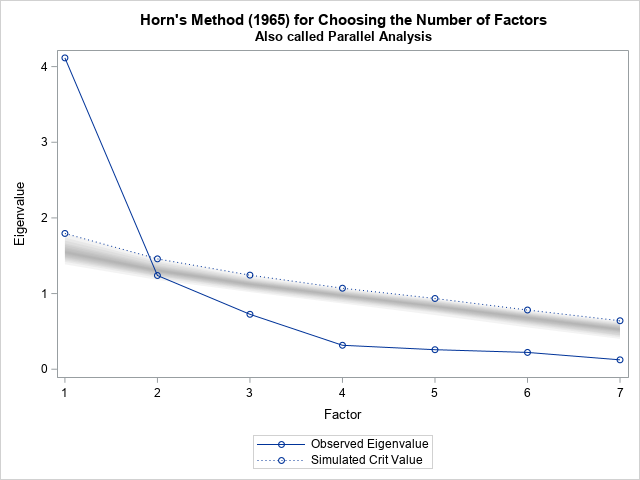
One purpose of principal component analysis (PCA) is to reduce the number of important variables in a data analysis. Thus, PCA is known as a dimension-reduction algorithm. I have written about four simple rules for deciding how many principal components (PCs) to keep. There are other methods for deciding how

비정형 텍스트 데이터는 인류가 생성하는 가장 큰 데이터입니다. 더 나은 비즈니스 결정을 내리고, 제품 전략을 알리고, 고객 경험 개선에 도움이 되는 유용한 정보가 바로 이 데이터에 포함되어 있습니다. 비정형 텍스트 데이터의 잠재력을 최대한 활용해야 하는 이유입니다. 본 시리즈에서는 텍스트 데이터에서 인사이트를 얻는 주요 방법과 이를 위한 SAS 솔루션을 살펴봅니다. 전

Recientemente, fueron publicados los resultados del Informe sobre el Futuro de los Empleos del Foro Económico Mundial, el cual no solo traza el mapa de lo que serán los empleos y las habilidades del futuro, sino que tiene en consideración el impacto que producirá en la forma de trabajar en la

If you’re like me and the rest of the conference team, you’ve probably attended more virtual events this year than you ever thought possible. You can see the general evolution of virtual events by watching the early ones from April or May and compare them to the recent ones. We

La aplicación de la tecnología al entorno educativo ha ampliado de forma considerable las posibilidades en cuanto a canales y métodos de aprendizaje. Precisamente, en los últimos meses, en los que la educación online ha alcanzado niveles inimaginables hasta el momento, ha surgido un aumento del interés en disciplinas como
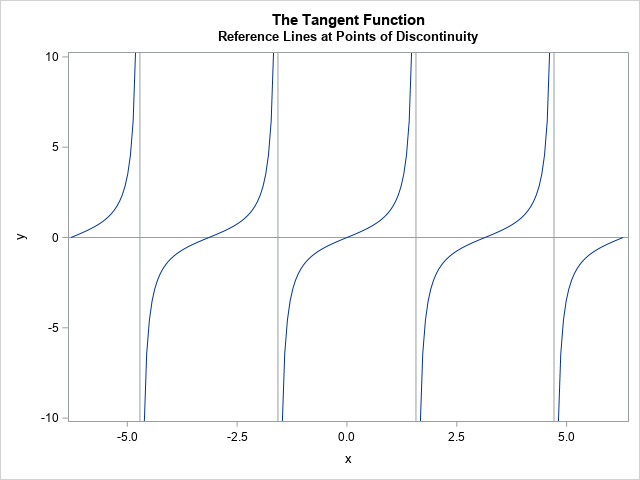
I have previously written about how to plot a discontinuous function in SAS. That article shows how to use the GROUP= option on the SERIES statement to graph a discontinuous function. An alternative approach is to place a missing value for the Y variable at the locations at which the
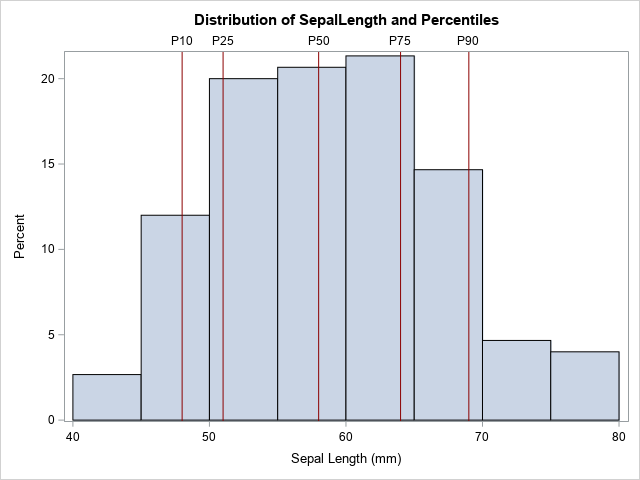
The REFLINE statement in PROC SGPLOT is one of my favorite ways to augment statistical graphics such as scatter plots, series plots, and histograms. The REFLINE statement overlays a vertical or horizontal reference line on a graph. You can specify the location of the reference lines on the REFLINE statement.

지난 딥러닝 시리즈에서는 SAS Visual Data Mining and Machine Learning을 활용한 딥 러닝 모델 생성에 대한 내용 중 <기본 심층 신경망(DNN) 모델 아키텍처와 배치 정규화를 사용한 DNN 모델 구축>에 대해 소개해 드렸습니다. 이번 시리즈에서는 딥 러닝 성능을 개선할 수 있는 하이퍼파라미터를 조정에 대해 소개해 드립니다. 일정 기간에 걸쳐 성능이 향상되고

SAS' Leonid Batkhan explains the data cleansing task of removing unwanted repeated characters in SAS character variables.

When there are two equivalent ways to do something, I advocate choosing the one that is simpler and more efficient. Sometimes, I encounter a SAS program that simulates random numbers in a way that is neither simple nor efficient. This article demonstrates two improvements that you can make to your

01. はじめに 今回のポスティングでは、SAS Viyaの「テキストトピック」という機能を用いたSNSの消費者の声の分析例を紹介したいと思います。分析の手法として「ワードクラウド分析」という方法を使いましたが、こちらについても後ほどお話します。SNS上の書き込みデータを分析することで、ビジネスに役立てられる洞察を得ることができますので、最後まで読んでいただければと思います。 02. 消費者の声分析の一般的な流れ SNS上の消費者の声分析は、一般的に大きく3つの段階に分けることができると思います。そのステップ①は様々なSNSプラットフォームから消費者の声を集める「データ収集」です。ステップ②は、収集したデータを分析する段階です。データ分析の手段はいくつかがありますが、本記事では、「ワードクラウド分析」という手法を用いることにします。最後のステップは、ビジネスメリットに繋げるように分析結果を活用する段階です。分析結果を元により意思決定し、施策を実施する段階です。本記事では、3つの段階の中で2段階目の「データ分析」、具体的には、「ワードクラウドを用いた分析」について説明します。 03. ワードクラウド分析とは? ワードクラウドというのはテキストデータの意味をより直感的に把握するための分析の一つ手法です。 テキストデータを単語に分割し、単語ごとの出現頻度をカウントし、その頻度に応じた大きさでその単語を視覚的に表示してくれます。 つまり、テキストや文章が何に関して語られているのか、そのキーワードを簡単に見つけ出すことができる手法になります。 例えば、SNS上の書き込みをテキストデータ化して分析し、顧客や消費者が今どんな事に興味を持っているのか、どんな不満があるのか、などを把握することができます。 (出典:https://awario.com/) 私はニュースなどのメディアでアメリカのトランプ大統領がどんな単語を何回使ったか、トランプ大統領のツイッターを分析したワードクラウドを見たことがあります。例えば、上のイメージは、2018年から2019年までのトランプ大統領のツイッターでつぶやかれた単語のワードクラウドですが、「border」と「wall」が一番使われた単語ということが一目で分かります。 04. SAS Viyaのワードクラウドの特徴 SAS Viyaのワードクラウドの特徴についてご紹介します。 まず、自動的に分析対象のテキストデータを単語に分割した上で解析します。所謂テキストマイニングと言いますが、その結果として、それぞれの文章がどんな話題(トピック)に関して語っているのかを分析し、トピックごとにキーワードを頻度に応じた大きさで確認することができます。また必要に応じて、気になるトピックやキーワードの元の文章を確認することもできるようになっています。 また、分析の際、冠詞や、助詞、副詞など、意味がない単語は自動で外して分析を行います。 これも、SAS Viyaのワードクラウドの一つの特徴なのですが、例えば、Open Source系のプログラミング言語で分析をすると、英語の 「the」や「a」などは、 分析者自身でなんとかして、取らなければいけないこともありますが、SASでは自動でその作業を行います。 さらに、書き込み内容がネガティブな内容なのか、ポジティブなのか、中立であるか、確認できる機能もあります。この機能は、「センチメント分析」、 日本語では「感情分析」と呼ばれますが、SASではワンクリックで簡単に実行できます。 05. 消費者の声分析例 それでは、SAS Viya の「テキストトピック」という機能を用いた消費者の声分析デモをご紹介いたします。 ▲ 準備したデータについて 日本では最近「天高く馬肥ゆる秋」になったので、季節感が感じられるように「天気」に関したデータを準備しました。また、オーストラリアのシドニーとカナダのバンクーバーのツイッターデータを収集しました。この二つの地域を設定した理由は、現在のシドニーは昼間の平均気温が約20度で、少し暖かいか、涼しい天候ですが、バンクーバーは約5度と少し寒く、対立的な地域を選ぶことで、明確な結果を得たかったからです。(個人的な理由もあり、キャリア管理の上司がSASオーストラリアのシドニーで働いていて、同期の1人はSASカナダのバンクーバーにいるので、毎回オンライン会議で会う2人の季節環境が気になったのです。同期と出会った新入社員研修についての記事はこちら) データの対象期間は、10月15日から10月23日まで、9日間、データの取得の際に使ったキーワードは、「weather」、「today’s weather」、「weekend weather」、「winter」、「summer」という5つのキーワードを使いました。こういった条件で実際にツイッターから集められたデータは、シドニーが351件、バンクーバーが277件でした。 ▲ 「天気」に関するシドニーの消費者の声分析 まず、シドニーの消費者の声のワードクラウド分析結果を見てみましょう。 「雨」に関するトピックが44件で、トピック全体で1位になっております。こちらのトピックをクリックすると、このトピックに関連する用語・キーワードを右側の画面で確認できます。「rainy」の比重が最も大きいことが分かります。 (出典:https://www.holiday-weather.com) 雨に関するデータが多い理由は、データを収集していた10月15日から23日前後にシドニーは天気が曇ったり、雨が降ったりしたからだと考えられます。

アナリティクス人材としてのキャリアを歩む際、自身のスキルの証明は大事な要素になります。海外のライバルと競い合い、勝ち抜いた経験と称号は、その後の人生に大きな影響を与えるはずです。 Student Symposium は、SAS最大のイベントである SAS Global Forum の中で開催される学生コンペティションです。2-4名の学生と指導教官がチームとなり、アナリティクスを活用したオリジナル課題にチャレンジし、その優劣を競います。予選を勝ち抜いた8チームは SAS Global Forum 本番にて最終決戦に挑みます。 新型コロナウイルスの影響により、今年の SAS Global Forum 2020 はオンライン開催となり、来年春の SAS Global Forum 2021 も同様にオンラインでの開催予定です。今年の Student Symposium では、University of St. Thomas, Oklahoma State University, Kennesaw State University のチームがそれぞれ優勝、準優勝、3位を獲得しました。テーマは、学術論文のアブストラクトのテキスト解析やエコロジカル・フットプリントに影響を与える要因の解析、殺虫剤のミツバチへの影響の分析などでした。 日本の学生には難しい? そんなことはありません。近年、日本の学生がSAS Global Forumで発表したり、優れた研究発表を投稿した学生に送られる Student Ambassador にも日本の学生が選ばれています。次は Student Symposium にチャレンジしてみませんか? アナリティクスのツールとしては、SAS OnDemand for Academics
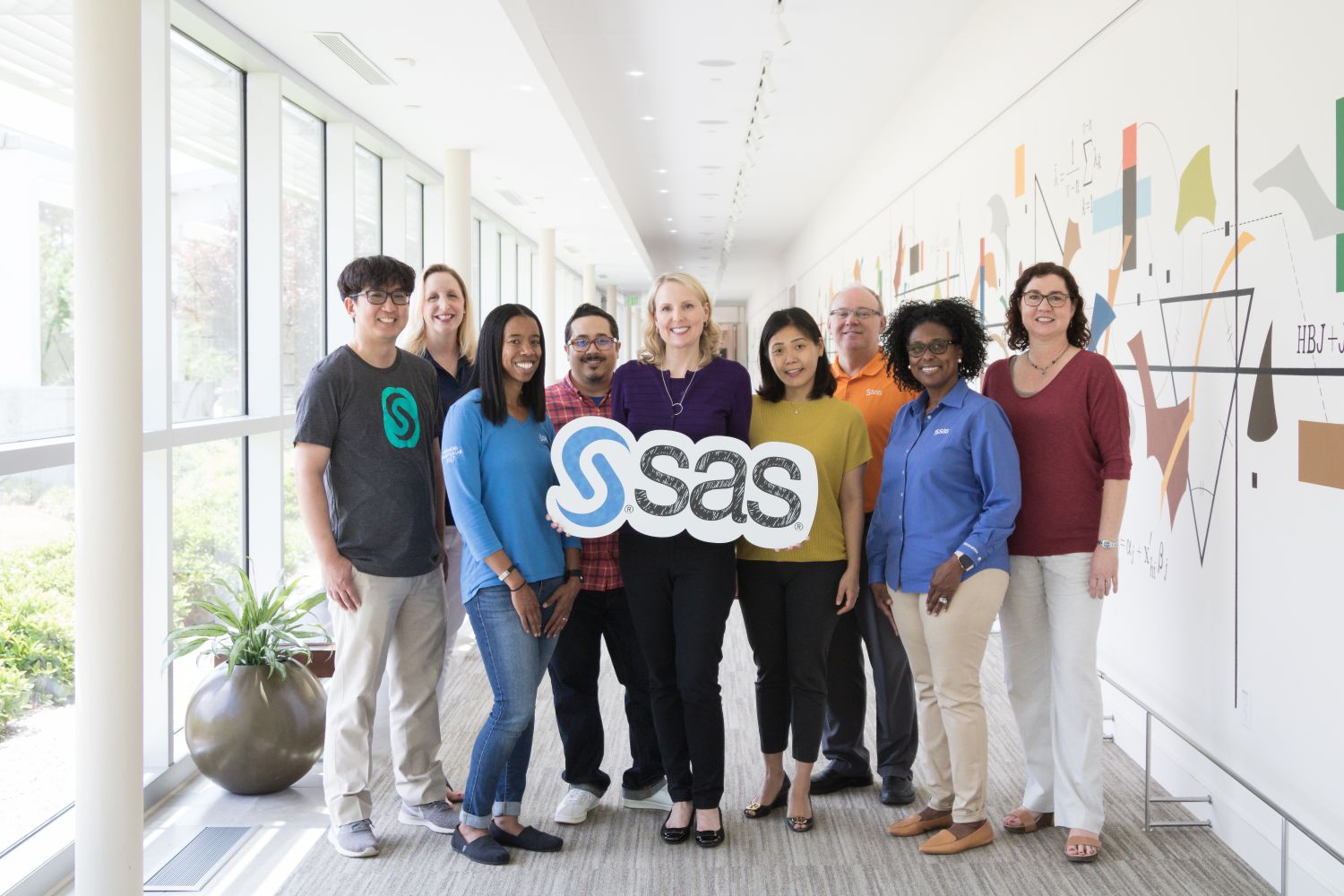
前回のSASブログ「SAS新入社員研修の体験談」では、筆者の同僚がSAS新入社員研修のGlobal Customer Advisory Academyについて概要とオンラインでの実施について紹介しました。COVID-19の影響で、今年度の該当プログラムはオンラインで実施されましたが、昨年度までこのプログラムは、アメリカのノースカロライナ州にあるSAS本社を訪問し、参加するグローバルプログラムでした。本ブログでは、現地での実体験に関して、主にいくつかインパクトなポイントを紹介します。 筆者が当時SASに入社する際に、該当プログラムに参加するチャンスがあり、アメリカ本社の現地に行き、経験したことがありましたので、ここでその経験と感想を共有したいと思っています。まず簡潔に、現地で行われたスケジュールを紹介していきますと、 プログラム名:Global Customer Advisory Academy(以下CAアカデミーと呼びます) プログラム期間:18週間 8週間・アメリカ本社に行き、研修を開始(前半) 4週間・日本オフィスに戻り、実務ローテーションを実践 6週間・アメリカ本社で研修を継続し、完了後に日本オフィスに戻る(後半) 使う言語:英語(ローテーション期間は日本語) では、このプログラムで、現地で行われた時に最も印象的なポイントはいったい何でしょう。下記三つの面から紹介します。 企業文化(価値観と帰属感) グローバル視野と広い人脈 社会責任への意識とチームでのValue創出 それぞれについて、CAアカデミーで、どう遂行されていたのを詳細に紹介します。 1.企業文化 SASのコア価値観:Curious、Authentic、Passionate、Accountableという四つの柱があります。それらはSAS企業文化の最大要素となり、SAS社員も日々それらの素質を持ち、行動していくことが、強く推奨されています。 それらの価値観は具体的にどのようにCAアカデミー研修で表現されているのかといいますと、下記の通りです。 C-Suiteの方々からダイレクトなSASの歴史と戦略の紹介 SASの業界コンサルタントからSASと各業界の関わり方とビジネスモデルの専門指導 各部門の指導者・業界先輩からの激励 現地でのCAアカデミー研修では、直接SASのトップ経営層からSASの過去から、現在と未来を対面で語られるチャンスが複数回与えられています。新入社員として、短時間で、明白にSASという会社はどのようなビジネスをしてきて、これからどの方向に向かっているのかということを把握することができ、会社理念を認識することができるようになっています。アカデミーで、Authenticな会話ができるため、新入社員も各自自分の将来に繋がる会話をすることが多くなっています。そのような環境が備えられていることで、数週間のうちに、自然にSASの企業文化と理念を身に着けていきます。知識を吸収するというよりも、馴染んでいくということに近いです。 また、現地でCAアカデミーに参加した時に、各業界のコンサルタントが定期的に本社オフィスにきて、業界研究知識などを教えてくれました。普段それらのコンサルタントたちは、各地域にいて、とても忙しい方がほとんどです。その中には、会社顧問などをされていた方もいました。筆者が参加した時に、ヨーロッパで仕事されていたある業界リードランクのコンサルタントがSAS本社オフィスに渡航してきて、業界に関する彼の知見を教えてくれました。この教える仕事は、彼たちの本職ではなく、CAアカデミーからの依頼に応じて、自主参加するものなので、そのような単なる仕事に対する熱意だけではなく、後輩を育てる情熱(Passionate)や責任を持つ意識(Accountable)のところは当時の私たちにとっても痛感できました。 SASのCEOであるDr. Goodnightはこう言ったことがありました。 「If you treat employees like they make a difference, they will make a difference」 実際、筆者がSAS本社にいた期間では、まさにこの言葉を実体験することができました。当時入社したばかりで、プログラムに参加した当初は、まだまだ浅い考えや振る舞いをしたこともありましたが、そこでシニアな先輩、指導者の方、マネージャーまで色んな方から励まされて、自分のやったことが有意義であることとして扱ってくれていました。そして、仕事に対する意欲・動力・興味は高められていきました。それはいまになっても、前進するモチベーションになったりすることがよくあります。 また、恥ずかしながら、筆者は物事の根源に当たるものを追求する好奇心を持ち、色んなアイデアを試して、正直に意見を言う人間です。そのような素質は、SASのコア価値観のCurious・Authenticと一致し、CAアカデミーの時から重視されてきました。 そのようなプロセスの過程で、SASのコア価値観と共に、だんだんSASへの帰属感も育てることができました。 2.グローバル視野と広い人脈 SASはグローバル企業ですので、CAアカデミーでは色んな国から、色んな背景を持つ方が一緒に参加しています。さらに、現地では、それらのグローバルの同僚と同じホテルで14週間も一緒に過ごすことで、お互いへの理解を深め、グローバル範囲での深い絆を構築することができました。 そのような環境で、実際日々の研修では、同じ課題に対する広い視野からの違う観点が毎日の研修の中で飛び交っていました。そして、そこからディスカッションの時間が充分に用意され、違う観点のグローバル同僚との会話により、自らの視野も広げていくことができました。そのような違う観点から物事を考える思考力はとても大切なもので、いまでも重視しているものだと思っています。

딥 러닝은 인공 지능과 함께 유비쿼터스가 된 머신 러닝의 한 영역입니다. 딥 러닝 모델의 복잡하고 뇌와 유사한 구조는 대량의 데이터에서 복잡한 패턴을 찾는 데 사용됩니다. 이러한 모델은 일반 지도 학습 모델, 시계열, 음성 인식, 객체 탐지 및 분류, 감성 분석의 성능을 크게 향상시켰습니다. 사전 정의된 방정식을 실행하도록 데이터를 구성하는 대신

A global teaching resource for post-COVID-19 academia During the COVID-19 pandemic, governments used data science modelling to justify actions around lockdowns, and then again, in due course, when they eased restrictions. These actions affected billions of citizens’ lives and livelihoods. The importance of analytical calculation and competence was brought home,

SAS' Leonid Batkhan summarizes a lesser known but useful feature in SAS that allows you to bring Microsoft Excel functions into your SAS programs.

はじめに 2020年5月7日から7月30日まで、約10週間 SAS本社で主催する「Global Customer Advisory Academy」という新入社員研修に参加しました。本来であれば、SAS Global本社があるアメリカのノースカロライナ州に行って受ける予定だったのですが、パンデミックという状況で全ての研修がオンラインで実施となりました。本記事では、Global Customer Advisory Academyをご紹介し、実際に参加して感じたことをお伝えします。 Global Customer Advisory Academyとは? 省略してCAアカデミーと呼ばれますが、Customer Advisoryというのは所謂プリセールスや営業支援部隊のことです。CAアカデミーは分析のコアテクノロジーや、コンサルティングスキルと方法論、SAS製品のポジショニングなどを学ぶ研修プログラムです。SASの全世界の拠点から社員が集められ、約10週間実施します。プログラム終了後は、実際の案件やプロジェクトなどに参加し、お客様の課題を解決するために活動します。具体的な情報と求人はこちらをご参考ください: https://www.sas.com/en_ph/careers/students-and-graduates/sas-academy.html#customer-advisory-academy CAアカデミーに参加するまでの事前準備 SASに入社する前は、プログラマーとしてウェブサイトの開発業務を行っていました。SASの製品を使ったこともなく、業界も異なり、また、顧客との接点やコンサルティング、営業活動などの経験もなかったので不安でした。 しかし、CAアカデミーに参加するまでに「Pre-work」というプログラムがあり、それを受講することで事前準備ができました。 1ヶ月間行ったPre-workでは、 - SASの会社概要と製品について - ビジネスマナー、リモートで効率的に研修を受ける方法 - 今回のCAアカデミーに一緒に参加する社員とのチームビルディング - CAアカデミーを終了した社員とのミーティング などがありました。特に、19カ国から31名の社員が参加するということで、それぞれの社会経験が異なり、「一緒に頑張って研修を受けるぞ!」という気分になったので心配はなくなりました。 10週間のCAアカデミー研修について CAアカデミーの詳細なカリキュラムは、グローバルトレンドと業界の動向に合わせてタイムリーに毎年変更されますが、いつも最高の研修プログラムを社員に提供するという事に変わりはありません。今回の研修で印象的だった部分は、次回にリリースされるSAS Viyaの新しいバージョンについて学べたことです。本社のR&DチームでSAS Viyaを設計した社員から直接技術的な内容について学ぶことができました。これにより、SASのお客様にも、もっと正確で専門的な技術支援を行うことができます。 また、金融、製造、官公庁、物流、小売、エネルギー、ITなど様々な分野のケーススタディを学ぶことができました。SASのお客様は全世界の多様な業界に存在しています。したがって、どのお客様にもベストソリューションを提供するために業界ごとのシナリオも勉強しました。 研修はすべて英語で行いました。英語で専門的なトピックについて長時間話したことがなくて、少し心配していましたが、研修のセッションに参加する前に準備資料を十分に読んで参加しました。また、一方的に講師が知識や情報を話すだけではなくて、理解ができていない所や気になった点はその場ですぐに質問できる雰囲気だったので積極的に聞いてみました。グループに分かれて1つのトピックについて議論し、意見を共有できた点も良かったです。CAアカデミーで十分なコミュニケーションを通じ、様々な視点から課題や解決策を考えることができました。 実は、上記のすべての研修は、自宅からオンラインで参加しました。驚きませんか?「オンラインで研修を受けることが可能なのか?」と最初は疑っていましたが、本当に問題なく約10週間の研修が無事に終わりました。SASでは全世界の約15,000人のすべての従業員がリモートワークができるような環境を提供しています。今回のCAアカデミー研修でも「6畳の部屋からグローバルネットワーキング」ということで全て自宅で参加しました。研修が終わって約2ヶ月が過ぎた現在では、一緒に研修に参加した31カ国の社員と毎月オンラインで集まってコミュニケーションを取っています。研修で築いた全世界の同期とのネットワークは私の財産です。 難しかったこと 研修のスケジュールに適応するまで少し時間がかかりました。何故かと言いますと、19カ国の31人のSAS社員がリモートで参加したため、すべての時間が異なり、全員の時間を考慮して研修のスケジュールが設定されたからです。ですので、研修スケジュールのほとんどが日本時間の午後9時から翌日午前1時、2時までと自分にとっては夜中のスケジュールとなりました。特に、私は朝早く起きて一日をスタートする、所謂「朝型人間」ですので、研修の時間に適応するまで数週間がかかりました。 日本時間で午後9時は、アメリカ時間では午前8時、スウェーデン時間では午後2時になるなど、19カ国の時間がすべて異なっていたので、31人皆が苦労した所だと思います。オンラインで会うたびに挨拶の言葉で皆が「good morning」、「good afternoon」、「good evening」この3つを全部一気に言ってしまいました。おそらく私一人だけ時差ぼけがあるのではなく、19カ国で参加した31人全員が大変だったので、協力しながら最後まで研修を受講することができたと思います。

Many textbooks and research papers present formulas that involve recurrence relations. Familiar examples include: The factorial function: Set Fact(0)=1 and define Fact(n) = n*Fact(n-1) for n > 0. The Fibonacci numbers: Set Fib(0)=1 and Fib(1)=1 and define Fib(n) = Fib(n-1) + Fib(n-2) for n > 1. The binomial coefficients (combinations

A previous article discussed how to solve regression problems in which the parameters are constrained to be a specified constant (such as B1 = 1) or are restricted to obey a linear equation such as B4 = –2*B2. In SAS, you can use the RESTRICT statement in PROC REG to